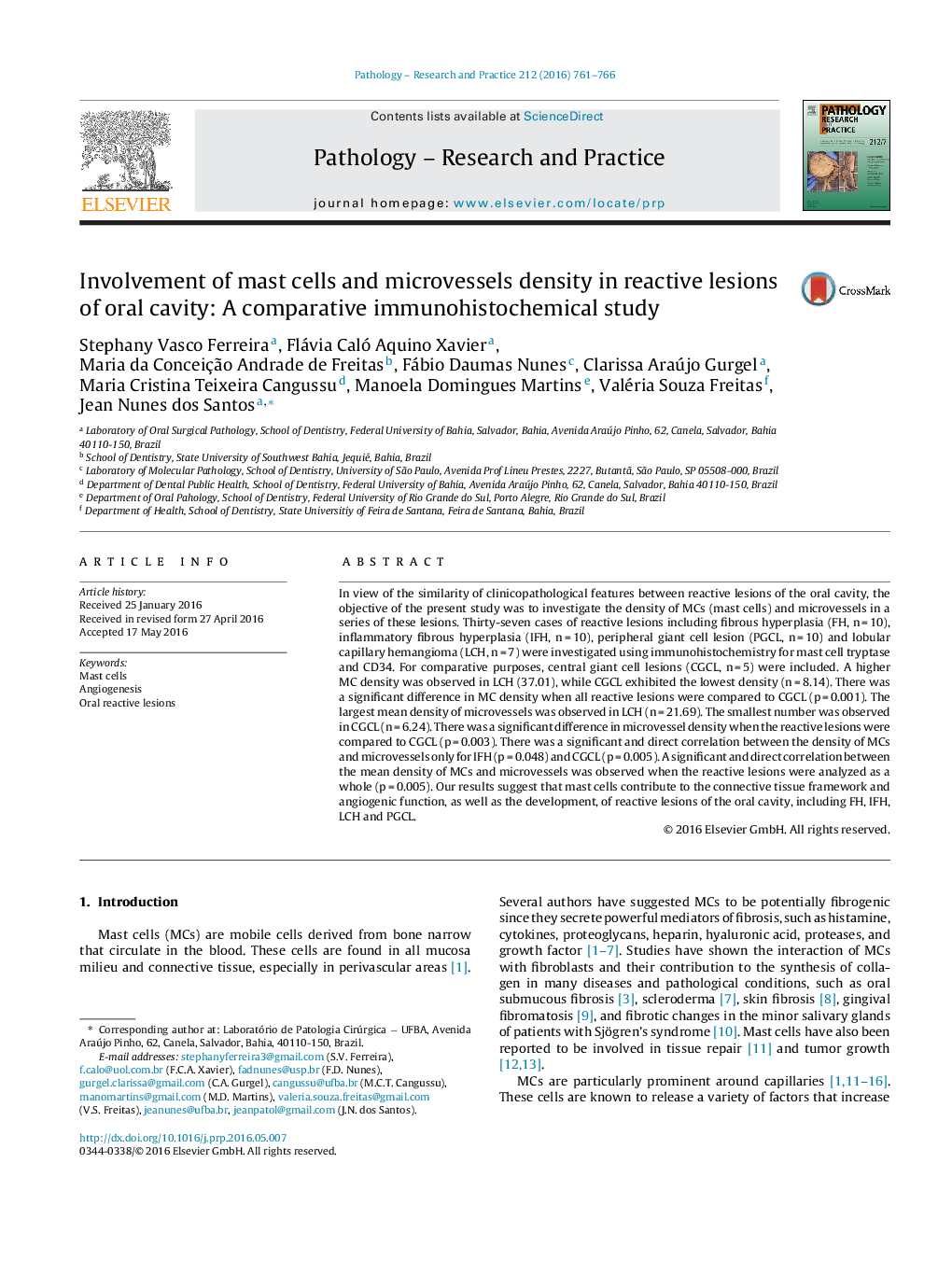| کد مقاله | کد نشریه | سال انتشار | مقاله انگلیسی | نسخه تمام متن |
|---|---|---|---|---|
| 5529407 | 1401697 | 2016 | 6 صفحه PDF | دانلود رایگان |
In view of the similarity of clinicopathological features between reactive lesions of the oral cavity, the objective of the present study was to investigate the density of MCs (mast cells) and microvessels in a series of these lesions. Thirty-seven cases of reactive lesions including fibrous hyperplasia (FH, n = 10), inflammatory fibrous hyperplasia (IFH, n = 10), peripheral giant cell lesion (PGCL, n = 10) and lobular capillary hemangioma (LCH, n = 7) were investigated using immunohistochemistry for mast cell tryptase and CD34. For comparative purposes, central giant cell lesions (CGCL, n = 5) were included. A higher MC density was observed in LCH (37.01), while CGCL exhibited the lowest density (n = 8.14). There was a significant difference in MC density when all reactive lesions were compared to CGCL (p = 0.001). The largest mean density of microvessels was observed in LCH (n = 21.69). The smallest number was observed in CGCL (n = 6.24). There was a significant difference in microvessel density when the reactive lesions were compared to CGCL (p = 0.003). There was a significant and direct correlation between the density of MCs and microvessels only for IFH (p = 0.048) and CGCL (p = 0.005). A significant and direct correlation between the mean density of MCs and microvessels was observed when the reactive lesions were analyzed as a whole (p = 0.005). Our results suggest that mast cells contribute to the connective tissue framework and angiogenic function, as well as the development, of reactive lesions of the oral cavity, including FH, IFH, LCH and PGCL.
Journal: Pathology - Research and Practice - Volume 212, Issue 9, September 2016, Pages 761-766
